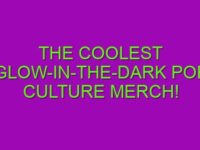-
Table of Contents
The Influence of Industrial Rock on Fashion Trends
Industrial rock, a genre that emerged in the late 1980s, has had a profound impact on modern culture. Its unique blend of heavy metal, punk rock, and electronic music has not only shaped the sound of contemporary music but has also influenced various aspects of popular culture. One area where the influence of industrial rock is particularly evident is in the world of fashion.
Industrial rock’s dark and edgy aesthetic has inspired a range of fashion trends that continue to resonate with modern audiences. The genre’s fusion of aggressive sounds and industrial imagery has given rise to a style that is characterized by its boldness and nonconformity. This rebellious spirit is reflected in the fashion choices of many industrial rock fans, who often embrace a gothic-inspired look.
One of the most iconic fashion trends associated with industrial rock is the use of black clothing. Black, with its associations of darkness and mystery, perfectly complements the genre’s brooding and intense atmosphere. Industrial rock fans often opt for all-black outfits, featuring leather jackets, ripped jeans, and band t-shirts. This monochromatic look not only pays homage to the genre’s roots but also serves as a symbol of rebellion and individuality.
Another key element of industrial rock fashion is the use of accessories. Chains, studs, and spikes are commonly incorporated into outfits, adding an element of aggression and toughness. These accessories, often worn as belts, bracelets, or chokers, serve as a visual representation of the genre’s raw and abrasive sound. They also contribute to the overall edginess of the industrial rock aesthetic.
In addition to clothing and accessories, industrial rock has also influenced hairstyles. Many fans of the genre opt for unconventional haircuts and colors, further emphasizing their nonconformist attitude. Shaved heads, asymmetrical cuts, and vibrant dyes are all popular choices within the industrial rock community. These hairstyles not only make a bold statement but also serve as a visual representation of the genre’s rebellious spirit.
The influence of industrial rock on fashion extends beyond the subculture itself. Elements of the genre’s aesthetic have been adopted by mainstream fashion designers and have appeared on runways around the world. The dark and edgy look associated with industrial rock has become a source of inspiration for many high-end fashion brands. This crossover between subculture and mainstream fashion has helped to further popularize the industrial rock aesthetic.
Moreover, industrial rock’s influence on fashion is not limited to clothing and hairstyles. The genre’s visual imagery has also made its way into the world of accessories and jewelry. Industrial-inspired accessories, such as chunky metal bracelets, spiked collars, and statement rings, have become popular among fashion-forward individuals looking to add an edgy touch to their outfits. These accessories serve as a nod to the genre’s industrial roots and contribute to the overall industrial rock aesthetic.
In conclusion, industrial rock has had a significant impact on modern culture, particularly in the realm of fashion. The genre’s dark and edgy aesthetic has inspired a range of fashion trends, from all-black outfits to unconventional hairstyles. Industrial rock’s influence extends beyond its subculture, with elements of its aesthetic being adopted by mainstream fashion designers. The genre’s rebellious spirit and unique blend of sounds and imagery continue to shape fashion trends and resonate with modern audiences.
Industrial Rock’s Impact on Music Production Techniques
Industrial rock is a genre of music that emerged in the late 1980s and early 1990s, combining elements of rock, electronic music, and industrial noise. With its aggressive sound and dark lyrics, industrial rock quickly gained a dedicated following and has since left a lasting impact on modern culture. One area where this impact is particularly evident is in music production techniques.
One of the defining characteristics of industrial rock is its use of unconventional and experimental production techniques. Unlike traditional rock music, which often focuses on capturing a live performance, industrial rock embraces the studio as an instrument in itself. This approach allows artists to manipulate and shape sounds in ways that were previously unimaginable.
One technique commonly used in industrial rock is the sampling of found sounds. Artists will record everyday noises, such as machinery, traffic, or even the clanging of metal, and incorporate them into their music. This adds a gritty and industrial quality to the sound, creating a sense of unease and chaos. By using these unconventional sounds, industrial rock challenges the listener’s expectations and pushes the boundaries of what is considered music.
Another technique that industrial rock has popularized is the use of electronic instruments and synthesizers. These instruments allow artists to create unique and otherworldly sounds that cannot be replicated with traditional rock instruments. By blending electronic elements with traditional rock instrumentation, industrial rock creates a sonic landscape that is both familiar and alien.
Industrial rock also embraces the use of distortion and feedback. These effects, which were previously seen as undesirable in traditional rock music, are used intentionally in industrial rock to create a sense of aggression and dissonance. By pushing the boundaries of what is considered acceptable in terms of sound quality, industrial rock challenges the listener’s expectations and forces them to confront their own preconceived notions of what music should sound like.
In addition to these production techniques, industrial rock has also had a significant impact on the way music is mixed and mastered. The genre often features dense and layered arrangements, with multiple tracks and effects competing for the listener’s attention. This requires careful balancing and manipulation of the different elements to create a cohesive and impactful sound. Industrial rock has pushed the boundaries of what is considered acceptable in terms of mixing and mastering, allowing for more experimentation and creativity in the production process.
Overall, industrial rock has had a profound impact on modern music production techniques. By embracing unconventional sounds, electronic instruments, and experimental production methods, industrial rock has pushed the boundaries of what is considered music. This genre has challenged the listener’s expectations and forced them to confront their own preconceived notions of what music should sound like. As a result, industrial rock has left a lasting impact on modern culture and continues to influence artists and producers to this day.
Industrial Rock’s Role in Shaping Subcultures and Countercultural Movements
Industrial rock, a genre that emerged in the late 1980s, has had a profound impact on modern culture. Known for its aggressive sound and blending of electronic and rock elements, industrial rock has not only influenced the music scene but has also played a significant role in shaping subcultures and countercultural movements.
One of the key ways in which industrial rock has influenced modern culture is through its ability to create and define subcultures. With its dark and rebellious themes, industrial rock has attracted a dedicated following of fans who identify with its music and aesthetic. These fans, often referred to as “rivetheads,” have formed their own subculture, complete with distinctive fashion, slang, and social norms. The music serves as a unifying force, bringing together individuals who feel alienated from mainstream society and providing them with a sense of belonging.
Moreover, industrial rock has been instrumental in the formation of countercultural movements. The genre’s confrontational lyrics and anti-establishment ethos have resonated with those who seek to challenge societal norms and question authority. Industrial rock has provided a platform for artists to express their dissatisfaction with the status quo and rally others to join their cause. This has led to the emergence of various countercultural movements, such as the cyberpunk and steampunk subcultures, which draw inspiration from industrial rock’s themes of dystopia and resistance.
In addition to its impact on subcultures and countercultural movements, industrial rock has also influenced other art forms, such as visual arts and literature. The genre’s dark and gritty aesthetic has inspired artists to create works that reflect its themes and atmosphere. From album covers adorned with industrial imagery to paintings and sculptures that evoke a sense of industrial decay, industrial rock has provided a rich source of inspiration for visual artists.
Furthermore, industrial rock’s influence can be seen in literature, particularly in the realm of science fiction and dystopian novels. Many authors have drawn inspiration from the genre’s themes of technological advancement, societal decay, and rebellion. Works such as William Gibson’s “Neuromancer” and Margaret Atwood’s “The Handmaid’s Tale” incorporate elements of industrial rock’s aesthetic and explore similar themes, creating a synergy between the music and literature.
The impact of industrial rock on modern culture extends beyond the realm of art and subcultures. The genre has also had a significant influence on mainstream music, with its fusion of electronic and rock elements paving the way for the development of other genres, such as industrial metal and electronic rock. Bands like Nine Inch Nails and Marilyn Manson, who emerged from the industrial rock scene, have achieved mainstream success and introduced industrial rock to a wider audience.
In conclusion, industrial rock has played a crucial role in shaping subcultures and countercultural movements, providing a voice for those who feel marginalized by mainstream society. Its influence can be seen not only in the music scene but also in visual arts, literature, and even mainstream music. With its aggressive sound and rebellious themes, industrial rock continues to leave a lasting impact on modern culture, challenging conventions and inspiring individuals to question the world around them.



















